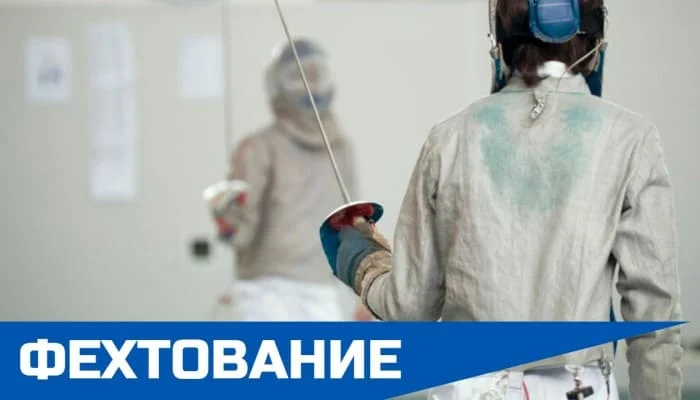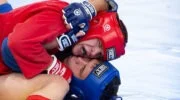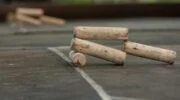In the article “Fencing” we will tell you about the noblest sport. You will learn about the history of fencing, the rules and technological features.
#Fencing #ProFencing #Sword #Sabre #Rapier
Sword fighting has always been part of human history. Duels and wars were fought using cold weapons, and to be effective they used techniques that might resemble those of modern fencing.
With the development of firearms, sword fights became less common, and fencing turned into a sport rather than military training. Around the 18th century, sports schools began to open in Europe, which made a valuable contribution to the development of the sport.
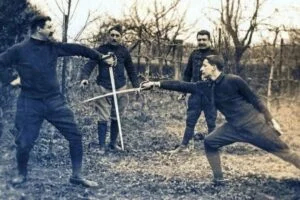
An example of this is the fencing academy, which was opened in 1763 in London by the famous Italian master Domenico Angelo. He is one of the first masters of fencing, who introduced innovations, various inventions, and taught the art of combat, turning fencing into a sport.
It took almost 100 years for fencing to compile and describe the basic rules of combat. They were described by the French master Camille Prévaux in 1880, 16 years before the first revived Olympics of 1896.
Since the sport developed mainly in Europe, it is not surprising that most high-level athletes come from the old world. Russia is no exception in this regard, we have excellent results in the Olympics, we regularly rank in the top of every international competition.
The fencing mask was invented at the end of the 18th century. The French master La Boissière invented it back in 1780. The mask is still in use today, and now it is simply impossible to practice without it.
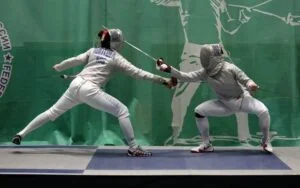
The most interesting duels are between the best nations. These include France, Italy, Russia, Hungary and Germany. At the last two Olympic Games (2016 and 2020) Russia deservedly received the title of “Best Nation in Fencing” as it was ahead of the others in the number of medals won. In 2016 our team added 7 medals (4 golds) to the overall medal tally, and in 2020 we added 8 medals (3 golds).
We are still reaping the benefits of the activities of Emperor Peter the Great, as it was he who introduced fencing as a subject for the education of the nobility. Aristocrats traveled to Europe, to France, Italy and Spain to gain skills. Since 1701 fencing had also been taught in St. Petersburg.
There are three types of weapons in fencing: rapier, saber, and epee. The epee is the heaviest and largest weapon in the sport. In order to earn points in a duel on epee, it is necessary to touch the opponent with the tip of the blade anywhere on the body.

Saber fencers, on the other hand, are not limited to the tip of the weapon, they can strike their opponent with any part of the blade, including chopping blows. To earn a point, fencers must strike the head, arms or torso, i.e. a common strike zone up to the waist.
Foil fencers may only deliver their blows to the torso and groin area. Rapierists’ strike zone is limited to a metalized jacket, which will signal a missed jab upon contact with the rapier.
Modern fencing blades are made of maraging steel. It can withstand 18,000 bends (rapier) and 7,000 bends (epee) in the international blade certification laboratory.
The organizers of international competitions, in order to fully ensure the safety of the athletes, before each stage check the weapons for integrity, on special equipment each blade is tested for micro-cracks. If the blade has cracks more than 60% deep, it will not pass the test.
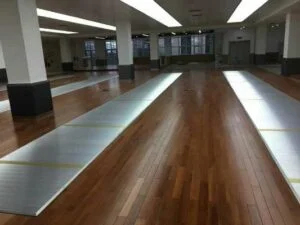
Fencing duels take place on a special track of 46 feet (14 meters). To detect a jab, an insulated electrical circuit is connected to the athlete’s jacket, which activates at the moment of contact with the opponent’s weapon. A signal is instantly transmitted to a scoreboard and signals a missed shot.
Fencing is a very specific sport in which competitors and judges are very serious about any violations of the rules. As a rule, these are violations of equipment, non-compliance with the referees’ instructions or even delay of the fight.
With a single and minor violation of the rules the judge may limit himself to a verbal warning, but if the violation is serious or repeated, then the athlete may be shown 3 types of cards.
A yellow card is issued for a minor offense, such as when a fencer turns his back on an opponent. As in soccer, two yellow cards are transformed into a red card, which automatically awards the opponent an extra point. A black card is a disqualification from the competition. It is used very rarely, for example in case of unsportsmanlike conduct.
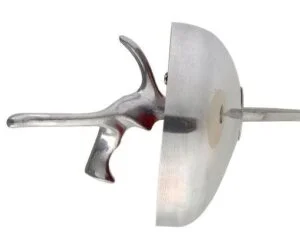
Sword and Foil also has an additional group of cards called P-cards. R-cards are issued for passivity and unwillingness to fight. If during the 1st minute none of the opponents makes a jab, the referee stops the duel and gives the R-card to the athlete with the lowest score. A red R-card is an automatic point to the opponent and a black one is a disqualification.
By the way, epee and rapier blades are very similar, and some do not even see the difference between them. This makes sense, as the rapier is a lighter version of the sword for civilians, for the nobility and the bourgeoisie.
At one time, the epee was considered a military weapon that could be used not only to stab an opponent, but could also be used to cut. The rapier, on the other hand, had only its tip sharpened, and the blade itself was often made refined and jeweled.
During the bout, all athletes must wear full gear to ensure their complete safety. Equipment consists of a mask, jacket, plastron (protection for the working arm and abdomen), gloves, breeches, socks and shoes. For boys and girls, there is also a plastic chest protector. An electric circuit is connected to the jacket and mask to detect the injection.
In the past, jabs in competitions were fixed with paint. A capsule of dye was embedded in the tip of the blade, which remained on the suit of the defeated duelist upon impact. The ether-based dye would evaporate in a minute, and the judges would then debate whether it had or had not.

The electro-fixing system works on the principle of closing an electrical circuit. The first part of the circuit is the athlete himself. The jacket is connected to the mask by electrical contacts, and the latter is connected to the locking equipment by a wire.
The second part of the circuit is the weapon. The weapon also has an electric wire built into it, which is connected to the equipment. When the jacket touches the enemy’s blade, the electrical circuit closes and a signal is sent to the equipment, which is registered by illuminated lights on a scoreboard.
The wireless electroshock system works on the principle of a car alarm system. A beacon is attached to the athlete, and the weapon, mask and jacket are connected to it with a wire. Athlete makes a shot, the signal from the beacon comes to the scoreboard.
The leadership of the International Federation especially liked the LEDs built into the mask. With every scoring shot, the winner shines like a Christmas tree, and the spectator clearly understands “Who poked whom”.

The first athlete who scores 15 points, i.e. makes 15 jabs, wins the duel. In epee and foil duel lasts 3 periods of 3 minutes each with a break of 1 minute. In sabre duel there are only two periods and the first one to score 8 points wins.
As a rule, each earned point is accompanied by a victory shout from the athlete. In the past, shouting on the field of athletes was considered bad form. The Soviet fencer Yuri Osipov was even taped over his mouth before the competition, so that the athlete did not disgrace the honor of the country.
Today, according to the coaches, modesty does not embellish the athlete, but rather prevents him from winning. It is proven that the louder the scream, the more accurate the blow! By shouting you can show your potential reserve of energy to your opponent.
Fencing is an exciting sport, it is sometimes called “physical chess”, because in addition to physical fitness, you need to be able to calculate all the possible attacks of your opponent. All of this you will learn, of course, in the athletic section.
The fencing section accepts children from the ages of 6 to 8. If you’re 12 or older, it’s already difficult to count on a competitive career in this sport. Fencing will allow your child to develop attention, speed and reaction, strength and perseverance. Moreover, fencing is a noble sport, and a young athlete will develop qualities that will come in handy not only at tournaments.
About fencing
FAQs
What is fencing?
Fencing is a martial art in which athletes fight with three types of edged weapons: epee, rapier and saber. It has been a part of the Summer Olympic Games since 1896.
Why do fencers compete only in white suits?
This is a tribute to tradition, since earlier the punctures were fixed with dye. Either a capsule of dye was inserted into the tip of the blade, or a piece of soaked rag was tied to it. In the history of fencing there were attempts to change the color of the suit, but the idea did not catch on.
What is the official language of fencing?
The official languages in fencing are French and English. Judging in fencing is conducted in French, since France made the greatest contribution to the development of the sport. The first international federation was opened in France, French masters described the complete rules of the sport, and they also introduced innovations and various inventions. Yes, in fact, the Olympic Games were revived by the French Baron Pierre de Coubertin.
What is Japanese fencing?
Kendo (the way of the ball) is a Japanese martial art on bamboo swords sinai. Duels are conducted in the form of duels (one-on-one) lasting from 3 to 5 minutes. The athlete who performs the most holds wins.

